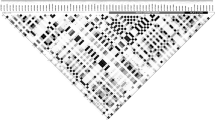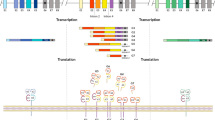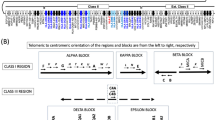Abstract
The human major histocompatibility complex (MHC) contains a variety of genes, many of which are highly polymorphic and of immunological importance. A database of MHC extended haplotypes was used to integrate experimental, cell line, and population data. Three alleles of the human TNF-beta (lymphotoxin-alpha) gene were identified, named TNFB *1SL, TNFB *2LL, and TNFB *1LS, each representing a different lineage in the evolution of TNF region haplotypes. Lower variability in the length of the associated microsatellite alleles indicates that *1SL characterizes the youngest of the three haplotype lineages. Microsatellite haplotypes in the two older lineages show evidence for a coevolution of alleles through concerted expansions. Genetic predispositions to high and low TNF-alpha (cachectin) responses seem to have evolved independently in more than one lineage. The literature data suggest different, or even opposite, associations concerning the regulation of TNF-alpha in macrophages and lymphoid cells. Microsatellite ud may be the most informative marker for studies of the associations of individual TNF region markers with secretion levels, immunity, and disease.
Similar content being viewed by others
Author information
Authors and Affiliations
Additional information
Received: 10 December 1996 / Revised: 21 May 1997
Rights and permissions
About this article
Cite this article
Weissensteiner, T., Lanchbury, J. TNFB polymorphisms characterize three lineages of TNF region microsatellite haplotypes. Immunogenetics 47, 6–16 (1997). https://doi.org/10.1007/s002510050320
Issue Date:
DOI: https://doi.org/10.1007/s002510050320




